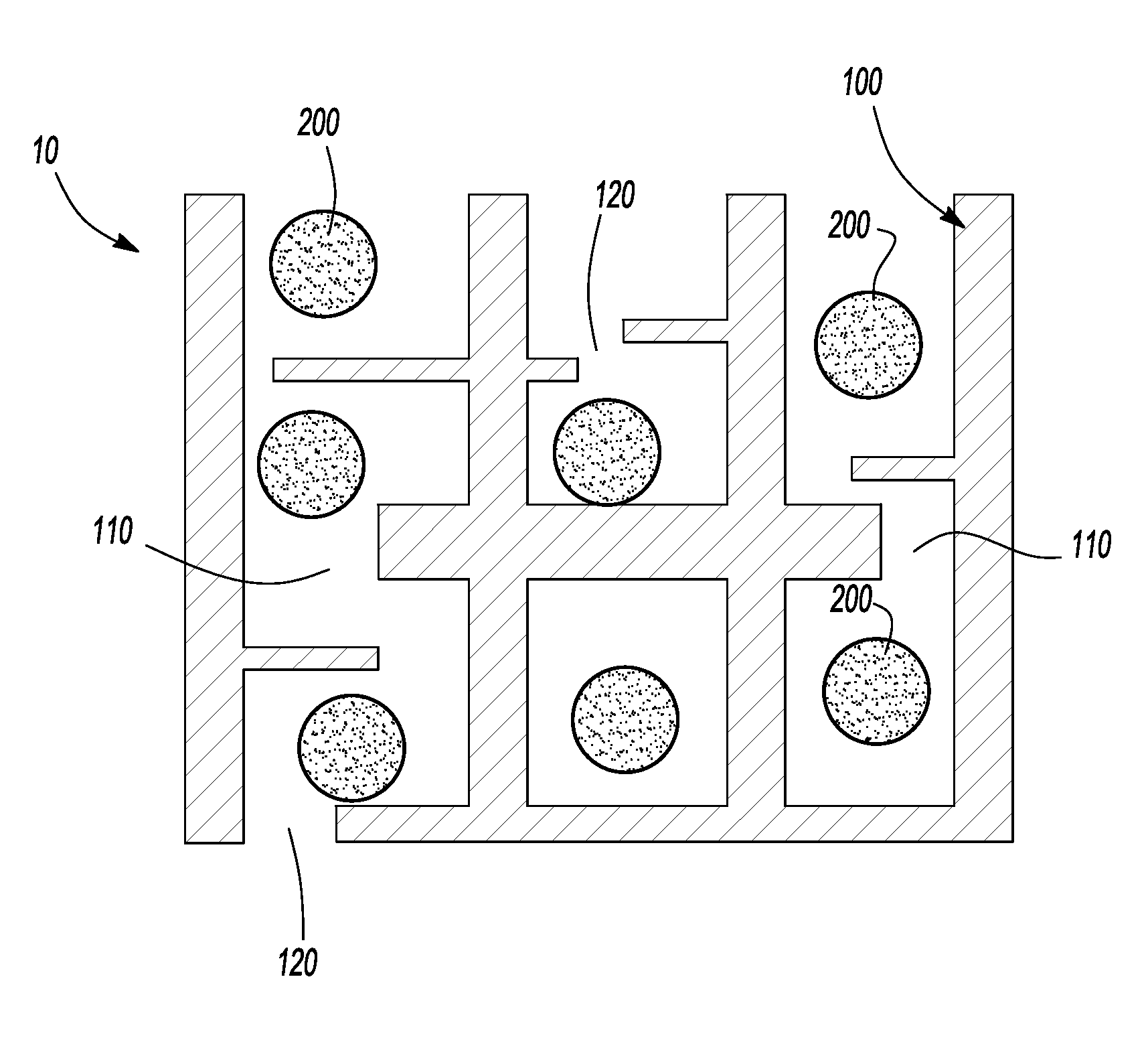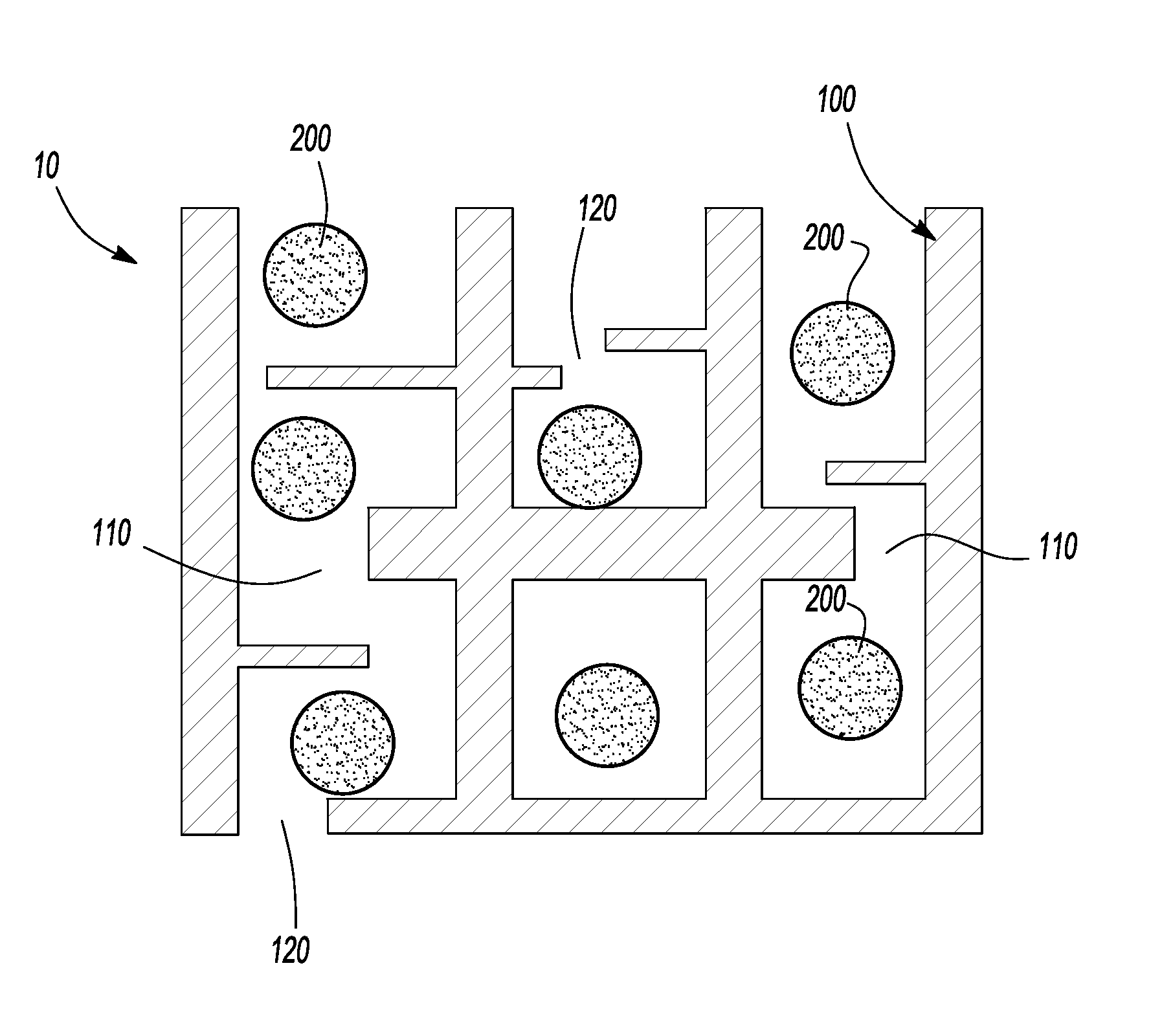Lithium-alloying-material/carbon composite
a technology of carbon composite and alloy material, which is applied in the field of electrode materials for use in lithium-ion batteries, can solve the problems of battery specifications that cannot be met using traditional lithium-ion battery chemistries, battery energy requirements are continually increasing, and cell components continue to be subject to volume and mass constraints
- Summary
- Abstract
- Description
- Claims
- Application Information
AI Technical Summary
Benefits of technology
Problems solved by technology
Method used
Image
Examples
Embodiment Construction
[0007]The present invention discloses a lithium-alloying-material / carbon (LAM / C) composite for use in an electrochemical device. As such, the LAM / C composite has utility as an electroactive material in a battery.
[0008]The LAM / C composite includes a body containing carbon and a lithium-alloying-material. The carbon is in the form of a high surface area and porous matrix having nanoporosity. The lithium-alloying-material is sorbed into the nanoporosity of the porous matrix such that the nanoporosity is only partially filled with lithium-alloying-material and can be present as discrete particles, coatings, and combinations thereof. Only partially filling of the nanoporosity with lithium-alloying-material affords for the diffusion or migration of an electrolyte through the nanoporosity to reach the lithium-alloying-material. In contrast, if the nanoporosity were filled with lithium-alloying-material, migration of the electrolyte to the lithium-alloying-material within the nanoporosity w...
PUM
| Property | Measurement | Unit |
|---|---|---|
| diameter | aaaaa | aaaaa |
| diameter | aaaaa | aaaaa |
| diameter | aaaaa | aaaaa |
Abstract
Description
Claims
Application Information
 Login to View More
Login to View More - R&D
- Intellectual Property
- Life Sciences
- Materials
- Tech Scout
- Unparalleled Data Quality
- Higher Quality Content
- 60% Fewer Hallucinations
Browse by: Latest US Patents, China's latest patents, Technical Efficacy Thesaurus, Application Domain, Technology Topic, Popular Technical Reports.
© 2025 PatSnap. All rights reserved.Legal|Privacy policy|Modern Slavery Act Transparency Statement|Sitemap|About US| Contact US: help@patsnap.com


